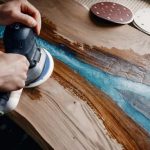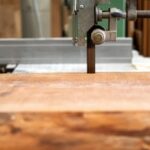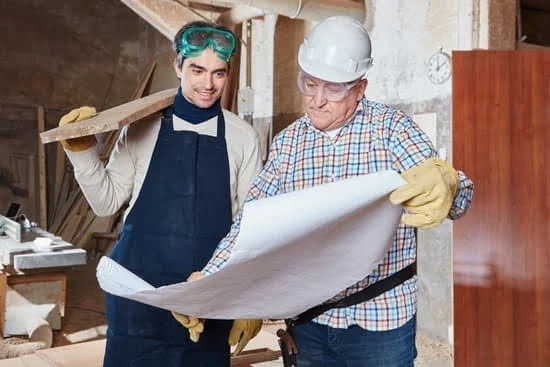Woodworking is a craft that relies heavily on precision and accuracy, making the art of measurement an essential skill for any woodworker. Whether you are a novice or a seasoned woodworking professional, knowing how to measure woodwork accurately is crucial for achieving quality results. In this article, we will delve into the importance of accurate measurements in woodworking and provide a comprehensive guide on how to measure woodwork effectively.
Accurate measurements are the foundation of successful woodworking projects. From cutting wood boards to shaping intricate joinery, precise measurements ensure that every component fits together seamlessly. Without proper measurements, even the most well-crafted pieces can end up misaligned or ill-fitting, leading to wasted materials and frustration.
To achieve accurate measurements in woodworking, it’s important to have the right tools at your disposal. A tape measure, combination square, marking gauge, protractor, and bevel gauge are just a few of the essential tools that every woodworker should have in their arsenal. These tools enable precise measurement of lengths, angles, and curves – all crucial elements in woodworking projects.
Understanding the significance of proper measurement techniques is paramount for anyone looking to excel in woodworking. In this article, we will explore step-by-step guides on measuring wood boards for cutting and shaping, as well as tips for achieving seamless joinery through accurate measurement and cutting.
Additionally, we will discuss common measurement mistakes to avoid and provide insights into ensuring precision in your woodworking projects. So let’s dive into the world of woodwork measurement and hone our skills for impeccable results.
Essential Tools for Measuring Woodwork
Woodworking requires precise measurements to ensure that cuts, shapes, and joinery fit together seamlessly. To achieve this level of accuracy, it is essential to have the right tools at your disposal. Here are some of the essential tools for measuring woodwork:
- Tape Measure: A tape measure is a versatile tool that can be used for measuring both length and width of wood boards. Look for a tape measure with clear markings and a locking mechanism for accurate readings.
- Combination Square: This tool is invaluable for marking 90-degree angles and checking for squareness in woodworking projects. It consists of a ruler and a head that can be adjusted to different angles, making it ideal for layout work and verifying the accuracy of cuts.
- Marking Gauge: A marking gauge is used to scribe parallel lines along the grain of the wood, ensuring consistent measurements for joinery and shaping. It can also be used to mark mortises, tenons, and other types of woodworking joints.
- Bevel Gauge: When working with angled cuts in woodworking, a bevel gauge is necessary for accurately transferring angles from one piece of wood to another. This tool helps ensure that your angled cuts match up precisely for a professional finish.
In addition to these basic tools, other items such as calipers, protractors, and angle finders can also be useful depending on the specific needs of your woodworking project. With these essential measuring tools in your workshop, you’ll be well-equipped to accurately measure woodwork and achieve professional results.
When considering how to measure woodwork accurately, having the right tools at hand is only part of the equation-knowing how to use them effectively is equally important. Taking the time to familiarize yourself with each tool’s capabilities and mastering techniques for precise measurements will greatly benefit your woodworking projects. By using these essential measuring tools correctly, you can ensure that your cuts are accurate, angles are consistent, and joinery fits together seamlessly-resulting in high-quality finished products.
Step-by-Step Guide on How to Measure Wood Boards for Accurate Cutting and Shaping
Measuring wood boards accurately is crucial for ensuring precise cutting and shaping in woodworking projects. Whether you are working on a simple DIY project or a professional woodworking endeavor, taking accurate measurements is the foundation for creating high-quality, seamless woodwork. In this section, we will provide you with a step-by-step guide on how to measure wood boards effectively for accurate cutting and shaping.
Choose the Right Measuring Tools
Before you begin measuring your wood boards, it is essential to have the right tools at your disposal. A reliable tape measure, a combination square, and a marking gauge are fundamental tools for accurate measurement in woodworking. Additionally, having a straight edge or ruler on hand can also aid in achieving precise measurements.
Marking the Measurement Points
Once you have selected the appropriate measuring tools, it’s time to mark the points of measurement on your wood board. Using a pencil or marking knife, make clear and visible marks at the designated measurement points. If you are marking for multiple cuts or shapes, use different types of marks to distinguish between them.
Double-Check Your Measurements
After marking your measurement points, double-check your measurements before proceeding with any cutting or shaping. It’s important to ensure that each measurement is accurate and consistent throughout the board. This step will help prevent errors and ensure that your woodworking project turns out as intended.
By following this step-by-step guide on how to measure wood boards for accurate cutting and shaping, you can ensure precision in your woodworking projects. Taking the time to measure properly will ultimately lead to higher quality results and reduced waste of materials.
Measuring Angles and Curves in Woodworking
Accurately measuring angles and curves is essential in woodworking to ensure precision and proper fitting of wood pieces. Whether you’re working on a simple DIY project or a complex woodworking endeavor, using the right tools and techniques to measure angles and curves can make all the difference in the quality of your final product. In this section, we will explore some essential tools such as protractors and bevel gauges, as well as techniques for achieving precise angles in woodworking.
One of the fundamental tools for measuring angles in woodworking is the protractor. This tool allows woodworkers to accurately measure, mark, and cut precise angles for their projects. It is crucial for creating symmetrical designs, angled edges, and other elements that require precise measurement.
Additionally, bevel gauges are indispensable when it comes to transferring angles from one piece of wood to another or setting saw blades at specific angles for cutting. These tools are essential for achieving accuracy in woodworking projects.
In addition to using these tools, there are various techniques that woodworkers can employ to ensure precision when measuring angles and curves. One common method is using reference lines or reference surfaces to measure and transfer angles consistently.
Another technique involves creating templates or jigs that can be used to replicate specific angles or curved shapes across multiple pieces of wood. By combining the right tools with effective measuring techniques, woodworkers can achieve high levels of accuracy in their woodworking projects.
| Woodworking Tool | Function |
|---|---|
| Protractor | Measures accurate angles |
| Bevel Gauge | Transfers angles between pieces of wood |
| Square | Maintains perpendicular edges |
Tips for Measuring and Cutting Joinery for Seamless Woodwork Assembly
Woodworking requires precise measurements and cutting to ensure seamless woodwork assembly. When it comes to joining pieces of wood together, accurate measuring and cutting are essential for a professional-looking finish. In this section, we will delve into some tips for measuring and cutting joinery in woodworking projects.
One important tool for measuring joinery is the combination square, which allows you to mark 90-degree angles accurately. Additionally, a marking gauge is crucial for creating consistent marks along the grain of the wood, ensuring that your joints fit together seamlessly. When cutting joinery, using a sharp chisel with a proper technique is key to achieving clean and precise cuts.
Another crucial aspect of measuring and cutting joinery is understanding the different types of joints and their specific measurement requirements. For example, when working on dovetail joints, accurately measuring and transferring the angles from one piece of wood to another is vital for a tight fit. By mastering the art of measuring and cutting joinery, woodworkers can achieve professional-level craftsmanship in their projects.
| Tool | Function |
|---|---|
| Tape measure | Basic tool used for taking linear measurements |
| Combination square | Allows marking 90-degree angles accurately | Marking gauge | Creates consistent marks along the grain of the wood |
By paying attention to detail and honing their measurement and cutting skills, woodworkers can achieve flawless joinery that enhances the overall quality of their woodworking projects.
Understanding the Importance of Proper Measurement for Woodworking Projects
Proper measurement is crucial in woodworking projects to ensure accuracy, precision, and seamless assembly. Without accurate measurements, woodworking projects can be plagued with mistakes and wasted materials, leading to frustration and potentially costly rework. Understanding the importance of proper measurement in woodworking is essential for any woodworker, whether they are beginners or seasoned professionals.
Importance of Accurate Measurements
Accurate measurements are the foundation of successful woodworking projects. Whether you are building furniture, cabinetry, or intricate wood crafts, precise measurements make all the difference in achieving a professional-looking end result. A small miscalculation can lead to ill-fitting joints, uneven surfaces, or misaligned components. By understanding the significance of accurate measurements, woodworkers can improve the overall quality and appearance of their creations.
How to Measure Woodwork
To achieve precise measurements in woodworking projects, it is essential to use the right tools and techniques. Using tools such as tape measures, combination squares, marking gauges, protractors, and bevel gauges allows woodworkers to accurately measure length, width, depth, angles, and curves.
Additionally; measuring boards for accurate cutting and shaping involves specific steps that ensure the pieces fit together seamlessly. Understanding how to measure woodwork not only improves the overall quality of the project but also saves time by reducing errors and rework.
Avoiding Mistakes and Wasted Materials
Proper measurement in woodworking projects not only improves the final outcome but also helps avoid costly mistakes and wasted materials. By taking accurate measurements from the start of a project and throughout its construction process; woodworkers can minimize errors such as inaccurate cuts or incorrect joinery.
This attention to detail ultimately leads to a more efficient use of materials and reduces waste while avoiding unnecessary expenses. Mastering the art of measuring woodwork accurately is an essential skill that every woodworker should prioritize honing for successful project outcomes.
Common Measurement Mistakes to Avoid in Woodworking
When it comes to woodworking, accurate measurements are crucial for the success of any project. Without precise measurements, your woodwork may not fit together properly, leading to wasted materials and a finished product that is less than perfect. To ensure accuracy and precision in your woodworking projects, it’s important to avoid common measurement mistakes that can result in costly errors.
To achieve accuracy in your woodworking measurements, consider the following tips:
- Always use high-quality measuring tools: Invest in reliable tape measures, combination squares, marking gauges, and other essential tools for precise measurements.
- Take your time: Rushing through measurements can lead to mistakes. Take the time to double-check your measurements before cutting or shaping any wood.
- Measure twice, cut once: This timeless advice holds true in the world of woodworking. Double-check your measurements to ensure they are accurate before making any cuts.
Measuring accurately also involves understanding different techniques for measuring angles and curves in woodworking. Tools such as protractors and bevel gauges can help you achieve precise angles for a seamless finish.
Remember that proper measurement is essential when cutting joinery for woodworking projects. Ensure that all pieces fit together perfectly by measuring and cutting joinery with utmost precision.
By paying close attention to detail and avoiding common measurement mistakes, you can achieve accuracy and precision in your woodworking projects while minimizing wasted materials. Mastering the art of measuring woodwork accurately will result in beautifully crafted finished products that showcase your skills and dedication to the craft.
Conclusion
In conclusion, mastering the art of measuring woodwork accurately is crucial for a successful and seamless woodworking project. From measuring wood boards for accurate cutting and shaping to determining precise angles and curves, the accuracy of your measurements directly impacts the overall quality of your work. Utilizing essential tools such as tape measures, combination squares, marking gauges, protractors, and bevel gauges is necessary for achieving precision in woodworking.
Understanding the importance of proper measurement in woodworking not only ensures that your projects are aesthetically pleasing but also helps to avoid mistakes and wasted materials. By taking the time to measure accurately and double-checking your measurements, you can protect yourself from costly errors and rework. Additionally, paying attention to common measurement mistakes to avoid will further enhance the accuracy and precision of your woodworking projects.
Ultimately, honing your skills in measuring woodwork will elevate the quality of your craftsmanship and set you on the path towards becoming a more proficient woodworker. With continuous practice, attention to detail, and utilizing the right techniques and tools, you can confidently measure woodwork with precision and achieve professional-level results in your woodworking endeavors.
Frequently Asked Questions
How Do You Read Carpentry Measurements?
Reading carpentry measurements involves understanding the use of a tape measure, ruler, or other measuring tools. Carpenters typically read measurements in inches and feet, using fractions or decimals for more precise measurements. They also need to be familiar with various units of measurement and understand how to accurately interpret them when sizing up materials for construction projects.
How Do You Measure Square Footage of Wood?
Measuring the square footage of wood involves multiplying the length and width of the wooden surface. To do this, you first measure the length and then the width in feet, rounding off any decimals for simplicity.
Then, you multiply these two dimensions together to get the total square footage. This calculation is important for determining how much wood is needed for a particular project.
How Do Carpenters Calculate Square Feet?
Carpenters calculate square feet by multiplying the length and width of a given area in feet. Taking accurate measurements is crucial because any errors could lead to wasted materials or inaccurate estimations.
Whether it’s for flooring, decking, or any other woodworking project, knowing how to calculate square footage accurately is essential for carpenters in order to plan and execute their projects effectively.

Hi everyone! I’m a woodworker and blogger, and this is my woodworking blog. In my blog, I share tips and tricks for woodworkers of all skill levels, as well as project ideas that you can try yourself.





